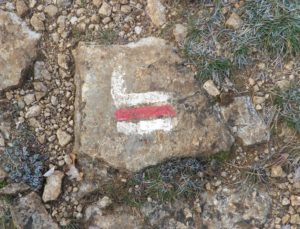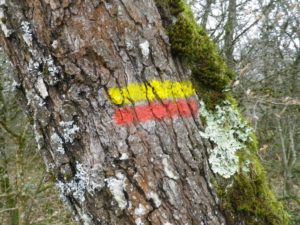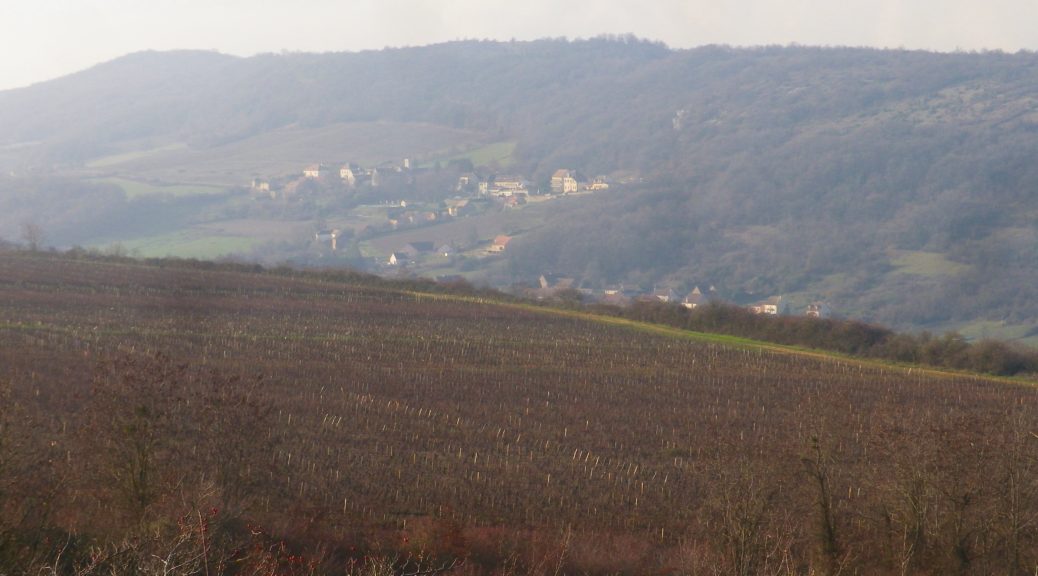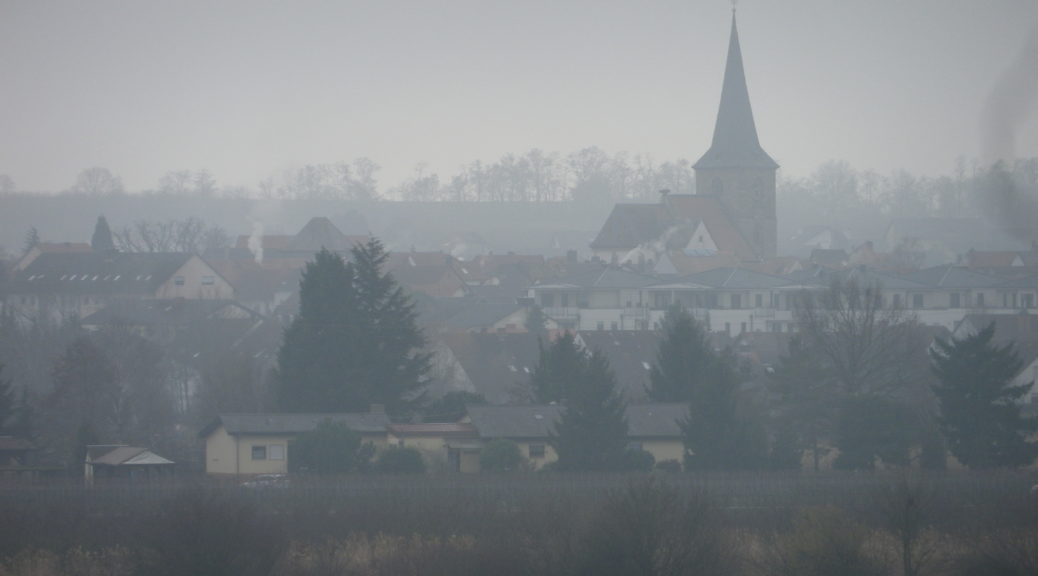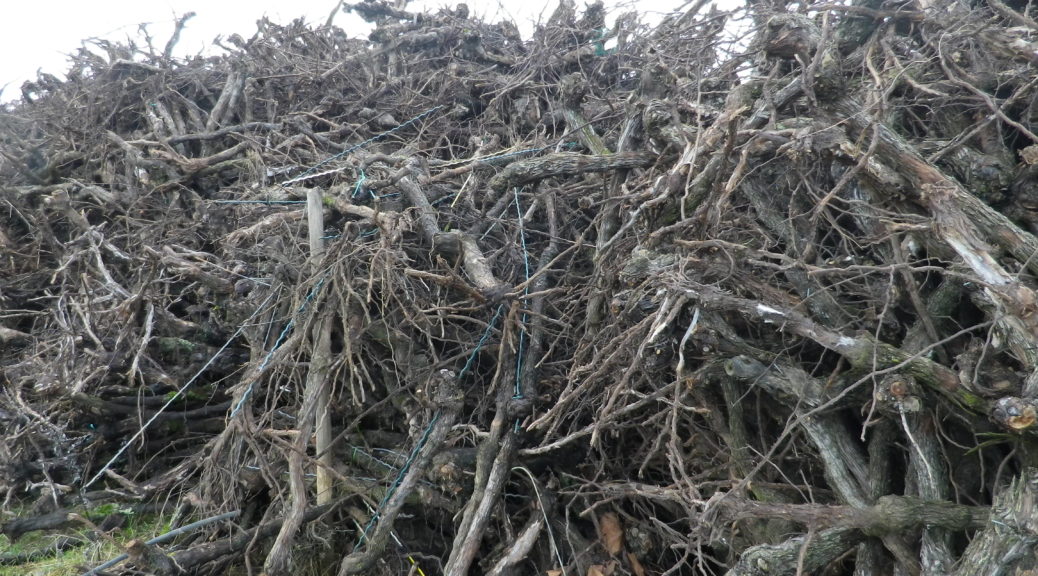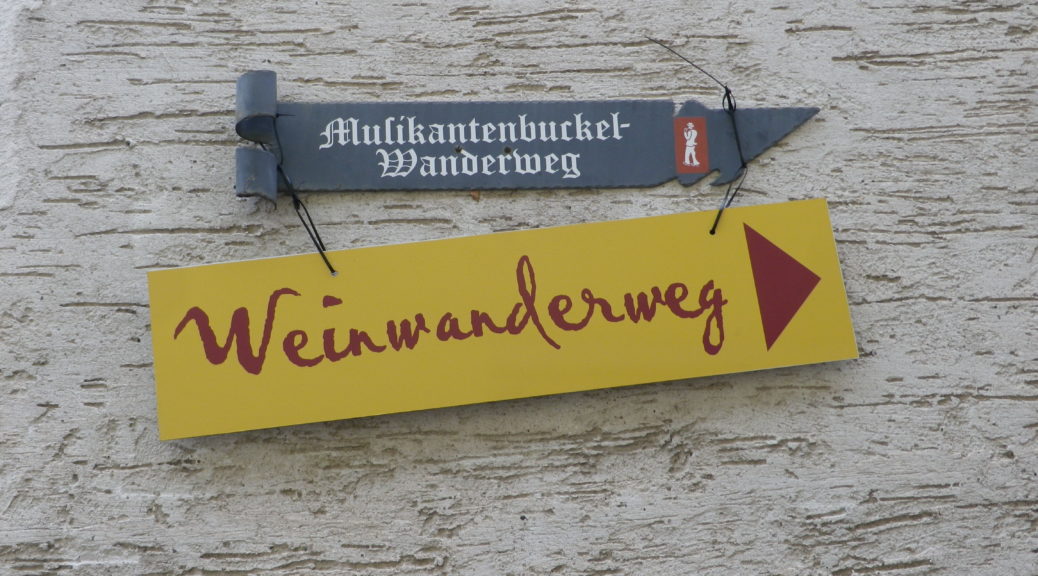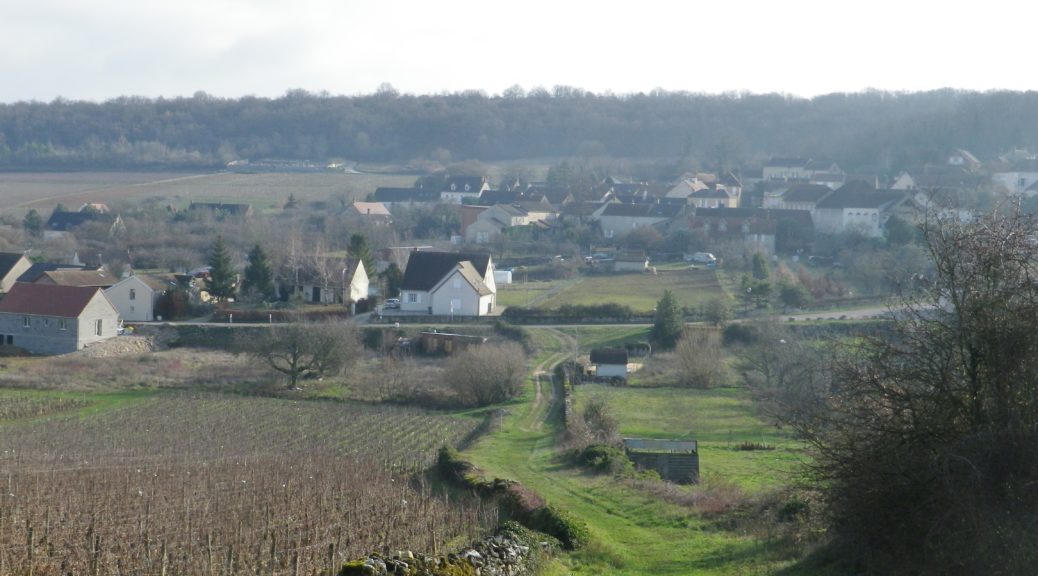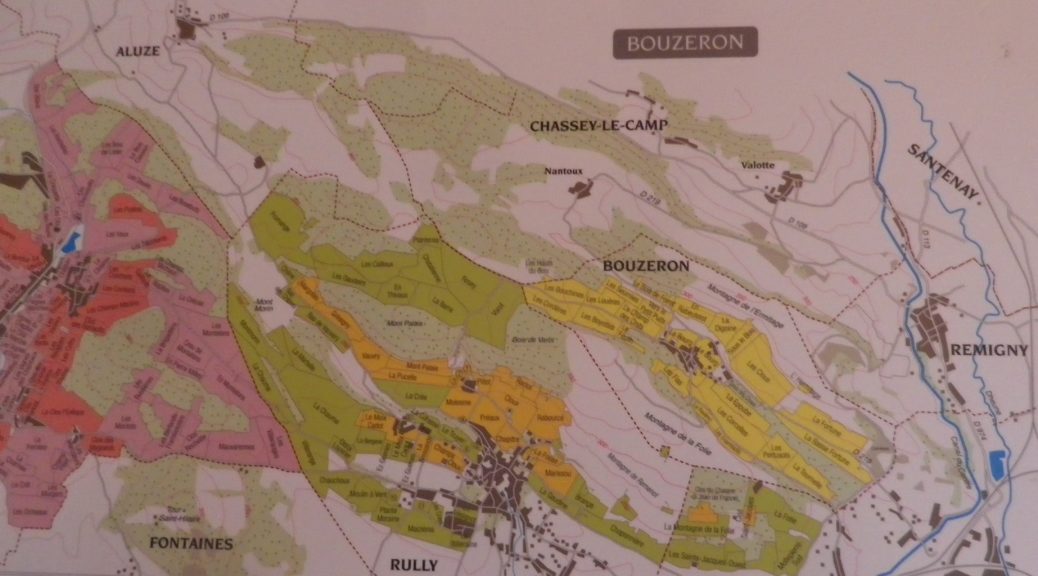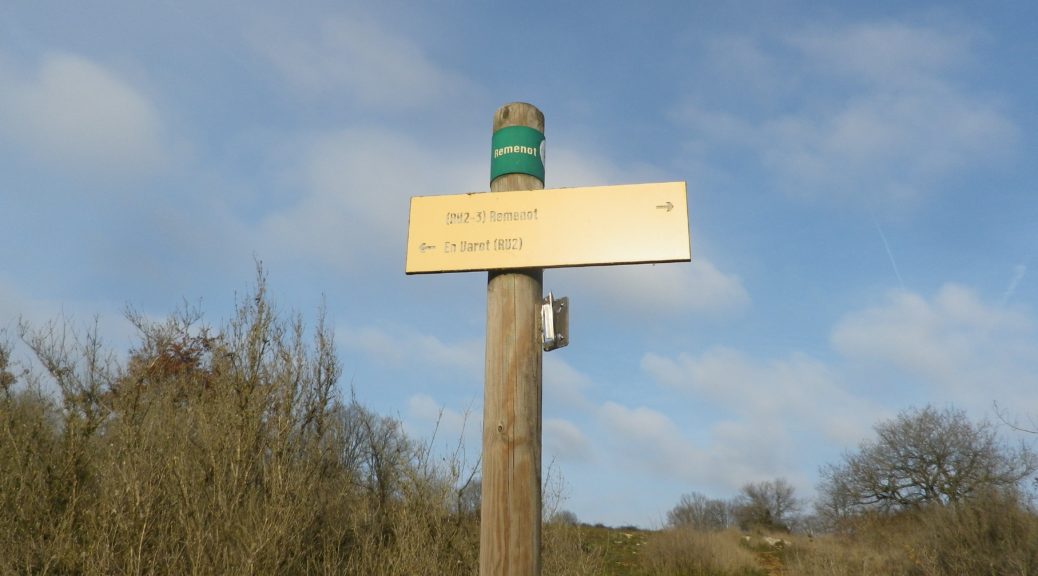Monthly Archives: February 2019
Singing for Supper
When the itinerant musicians of Mackenbach, in the Pfalz, crested the ridge from the northwest, they beheld the town of Freinsheim below. They announced their arrival with lively music, letting the town know they had arrived. Over the next couple of days, they would play, for coins, wine and food. Freinsheim, one of the northern most wine villages on the Deutsche Weinstrasse, has named this section of vineyard the “Musikanten-Buckel”, or the hump of hill where the musicians began to play. Freinsheim is also one of many villages along the Deutsche Weinstrasse that has several festivals throughout the year. Two of them involve “wine wandering”, which is how I came be in the village.
Traditionally, the January wine wandering trail follows mostly along an established trail called the Musikantenbuckel Wanderweg. But every year, on the last weekend of January, the trail is identified as the Rotweinwanderung (Red wine wandering). So, on a cold, dark and grey winter afternoon, I, and hundreds of other people, dressed warmly, with sturdy waterproof boots, set off along the trail, which starts in the village.
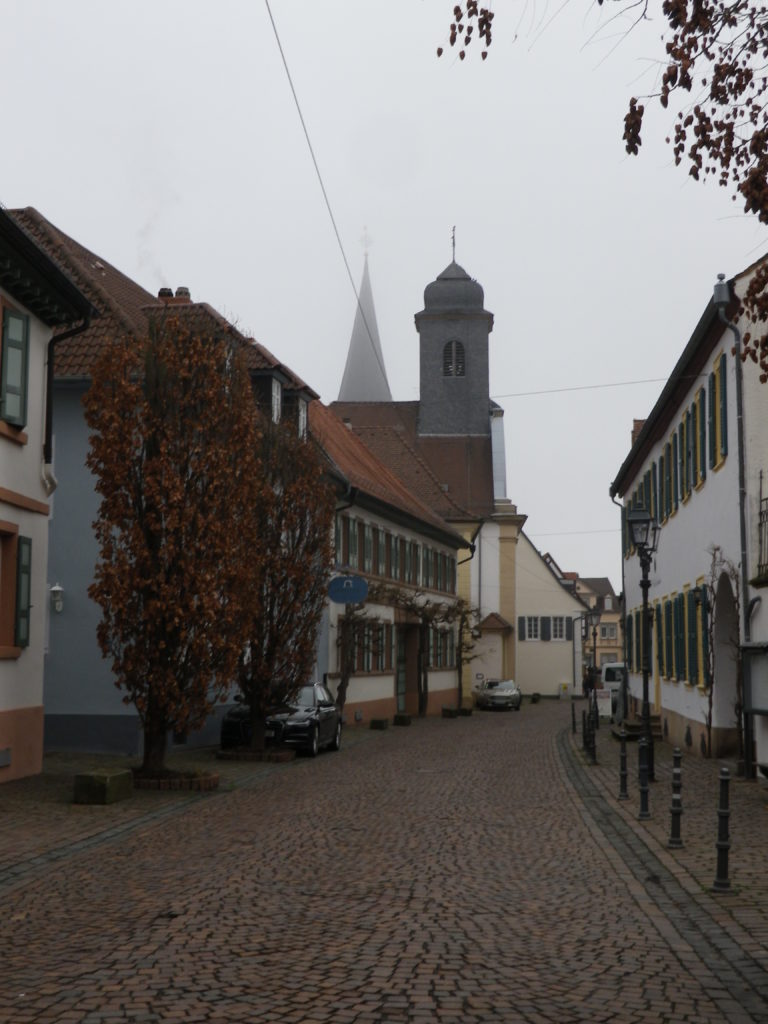
Wine Notes: Mittelhaardt’s Freinsheim
What I Learned:
The Pfalz wine region in the southern Rhineland Palatinate (Rheinland Pfalz, in German) has two divisions: Suedliche Weinstrasse and Mittelhaardt. The Mittelhaardt has some of the best-known vineyards. While the official German quality system does not necessarily recognize particular sites as being better than others, many vineyards, and even sections of vineyards, have names. Some of these named parcels, at least among the vintners, have better reputations than others. Thus, even though the official quality system does not focus on particular sites as superior, the VDP (Verband Deutscher Praedikats- und Qualitaetsweinguter) association members will name particular sites on their wine bottle labels as an Erste Lage (loosely equivalent to a Premier Cru site in France), or as a Grosse Lage, identified on the label as GG (for Grosses Gewaechs) (again, in VDP terms, loosely equivalent to a Grand Cru site in France). Some of the sites designated by VDP vintners as Grosse Lage in the Mittelhaardt around Bad Duerkheim include Bad Duerkheim’s Michelsberg parcel, and Ungstein’s Weilberg and Herrenberg parcels. Although Freinsheim does not have any Grosse Lage, it does have the Erste Lage of Schwarzes Kreuz, and the named parcel of Musikantenbuckel. The names can date from a long way back, and often have an interesting history associated with them. For example, the Musikantenbuckel received its name from the practice of itinerant musicians of yore travelling to Freinsheim, and beginning to play their instruments, once they reached that spot. (Being on the downside of a slope – good for vines, by the way – from that point apparently, townspeople could both see and hear the music men approaching through the vines.)
Musikantenbuckel Wanderweg: Trail in a Nutshell
Trail Name: Musikantenbuckel Wanderweg
Trail Type: Short distance circuit; well-maintained and almost exclusively paved with tarmac or concrete, marking on the trail good throughout
Length:
Total – 7.5 kilometers/ miles
Convenient to: Bad Durkheim, Germany
Marking: Musician playing a horn.
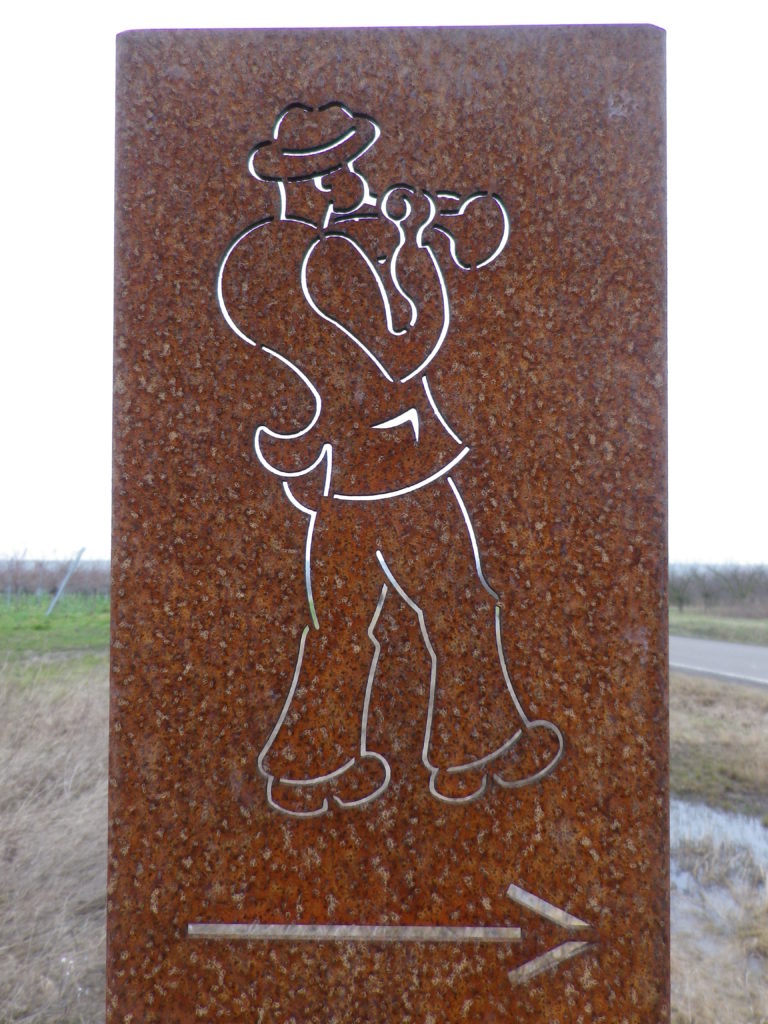
Trail Description:
A family-friendly, short circuit passes up and along a gentle slope, through the village and vineyards, (meaning it is almost completely unshaded), with views over the village and valley, and out to hills. This trail is paved for almost all of it, and where not, there are paved alternatives.
Trailhead:
Freinsheim – Hauptstrasse, at the old Rathaus
Parking:
Freinsheim – Parkplatz P3, Weisenheimerstr
Freinsheim – festival parking area along L522/Talweide. Note: only during the festival weekend!
Public Transportation Options:
Rail: Deutsche Bahn regional trains provide frequent regional train service to Freinsheim, from Gruenstadt to the north, and points south, including Neustadt an der Weinstrasse and Bad Duerkheim.
Bus: Buses connect Freinsheim with Bad Durkheim, and other towns in the area. Check VRN.de for schedules to and from Freinsheim.
Suggested Stages: Not applicable
Trail Itinerary-Reference Points: (Clockwise)
Freinsheim: by the old Rathaus, Korngasse-Wallstrasse-2 Querstr-Wenjenstr, Schubertstr-Franz-Liszt-Str, path straight across, the left along L522, past Sportplatz (soccer field), Orchards and vineyards, and the Weinbergsgarten (rest area with benches and picnic table), cross L455, parallel L455, then cross it again, vineyards, cross path across L522/Talweide
Representative Trail Photo:
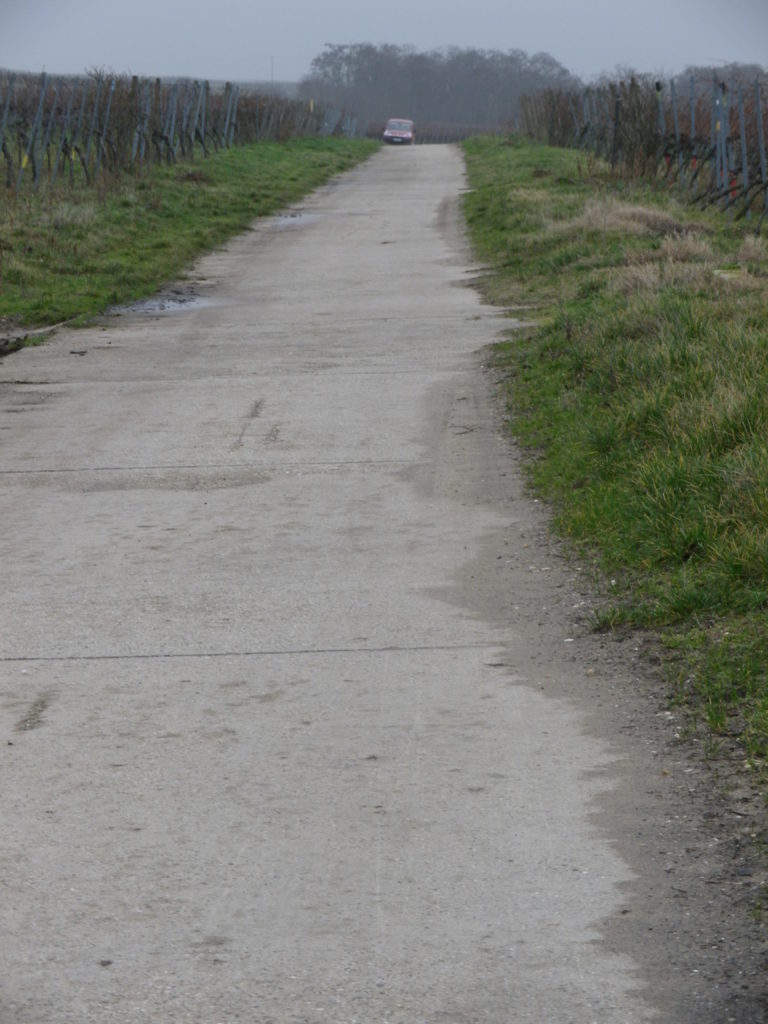
Restrooms:
Freinsheim, off Baerengasse
Musikantenbuckel, porta-potties on the trail. Note: only during the festival weekend.
Attractions on or near Trail:
While Freinsheim has no wine-themed museums or exhibits, there are several architectural features of historical interest in the old part of the village.
Tasting along the Trail:
The village of Freinsheim has many wineries (Weingut); and on the day of the Rotweinwanderung, there are half a dozen or so vintners with huts along the trail
Alternative Options:
Hiking: While the Deutsche Weinstrasse Wanderweg, the 96 kilometer-long (almost 60 miles) hiking trail from Bockenheim to the border town of Schweigen-Rechtenbach, passes near Freinsheim, it does not pass through it. Instead, Freinsheim offers a series of short, mostly family-friendly circuits, such as the Wanderweg “Schwarzes Kreuz”, through a named vineyard area.
Biking: Radweg Deutsche Weinstrasse, the 95 kilometer-long (almost 60 miles) cycling trail from Bockenheim to the border town of Schweigen-Rechtenbach), passes through Freinsheim.
Car: Deutsche Weinstrasse, the thematic car route from Bockenheim to the border town of Schweigen-Rechtenbach, passes near Freinsheim.
Additional Information:
Regional: http://www.freinsheim.de/tourismus_wein_und_kultur/uebernachten.html
Trail specific: https://www.outdooractive.com/de/wanderung/pfalz/freinsheim–musikantenbuckelrundweg-durch-die-weinreben/3321889/#dm=1
Comments:
End of January each year, the Musikantenbuckel area is the venue for the Rotweinwanderung, a walking wine and culinary festival. During this weekend, the Rotweinwanderung Weinwanderweg generally follows the same itinerary as the Musikantenbuckel Wanderweg, but is a bit shorter.
Musikantenbuckel refers to a named vineyard parcel. Freinsheim also has two others: Schwarzes Kreuz and Oschelskopf, with a hiking trail through them, the Schwarzes Kreuz trail. Combining this trail with the Musikantenbuckel would cover all of Freinsheim’s named vineyards, and provide a longer (about 14 kilometer) easy hike.
Arriving by train will add about 900 meters. From there follow: Bahnhofstr-Hauptstr, to arrive at the Rathaus, the official start.
Cote Chalonnaise Vines and Valleys
Dramatic terrain, bucolic villages, and an unusual varietal wine – this was what I found in Bouzeron. It is a small village in the Cote Chalonnaise, within view of the Cote d’Or, Burgundy’s most famous hillside. But Cote Chalonnaise wines, and indeed the region itself, is no poor second. In fact, with unspoiled villages, a wealth of architecture, terrains, and good hiking trails, as well as a co-equal passion for food and wine, I was thoroughly delighted with my all-too-brief visit.
The village of Bouzeron and the Vignes et Vallees trail around it, epitomized this sentiment. There was plenty of parking in the village, so that is where I left the car, early one winter morning. Starting from the village guaranteed that I would be climbing for ten minutes or so, which helped warm me up. Before I knew it, I was atop the Montagne de la Folie (or Remenot), looking east over Rully, and out toward Chalon sur Saone. It was a beautiful spot.
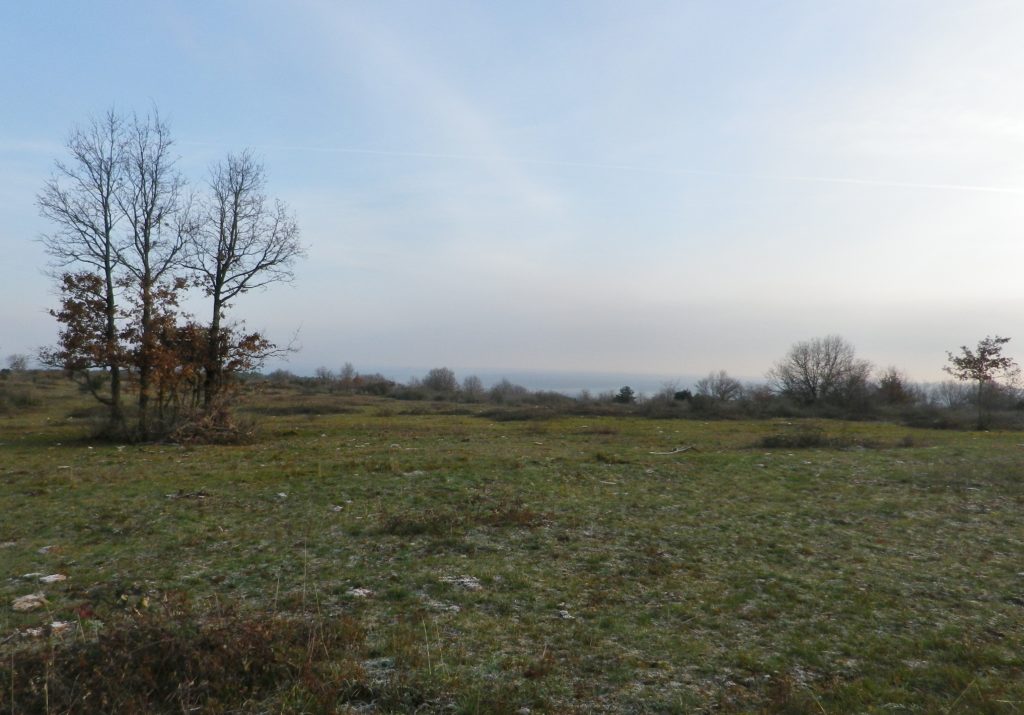
Wine Notes: Aligoté
What I Learned
Bouzeron is famed for its Aligoté wine. In fact, the small village holds the distinction of having the only village AOC in France dedicated to the Aligoté varietal, Appellation Bouzeron Controlee. The Aligoté grape and its wines tended be overlooked in the past, but made a comeback. Nowadays, they are often promoted as aperitive wines as their taste tends to be light, fruity and crisp.
Aligoté is a hybrid of the red/black Pinot Noir and the Gouais Blanc grapes. First mentions of this grape appeared in the late 1700s. Because it does well in cold grape-growing regions, it has recently been planted in Washington State, Chile and some Eastern European nations. As a flavor profile, Aligoté wines often have citrus, green apple, and white floral notes. This also makes them ideal for one of region’s most favored aperitive wines, the sparkling Cremant de Bourgogne, on its own or blended with Chardonnay. (In this case, the resulting sparkling wine could fall under the Appellation Cremant de Bourgogne).
Vignes et Vallees: Trail in a Nutshell
Trail Name: Vignes et Vallees (Aka : Au Fil des Vignes et Vallees)
Trail Type: Mid-distance circuit; well-maintained, surfaces vary from road, to grass, to dirt paths, to rock rib, marking on the trail rather good
Length: 13.25 kilometers/8.25 miles
Convenient to: Chalon-sur-Saone, Santenay, France
Marking: Two types, long distance and more local (red and white bars, or red and yellow bars, respectively), as well locational and directional signposts. (See featured photograph above)
